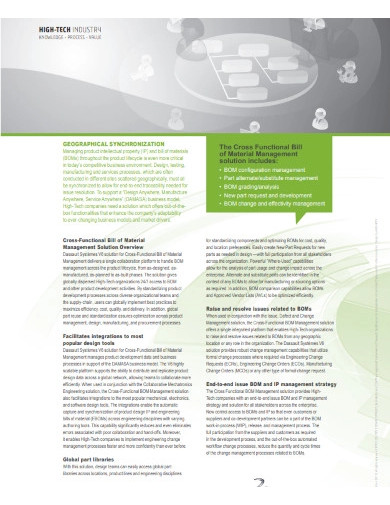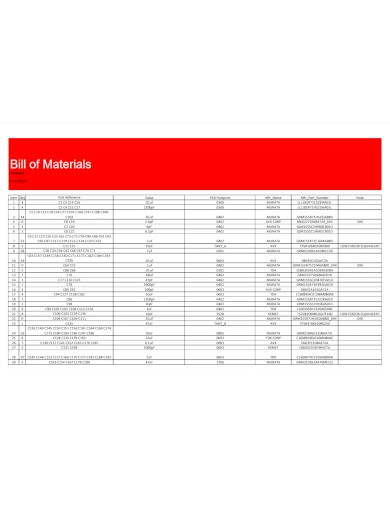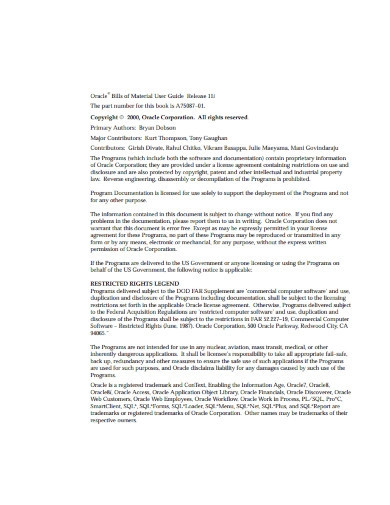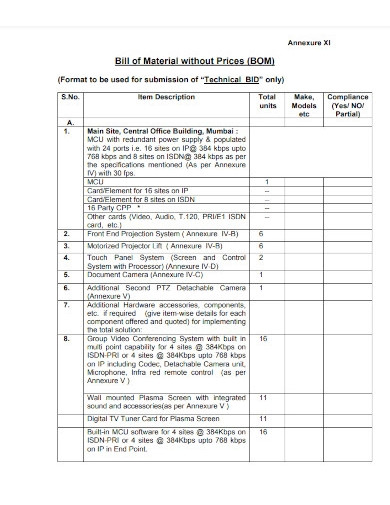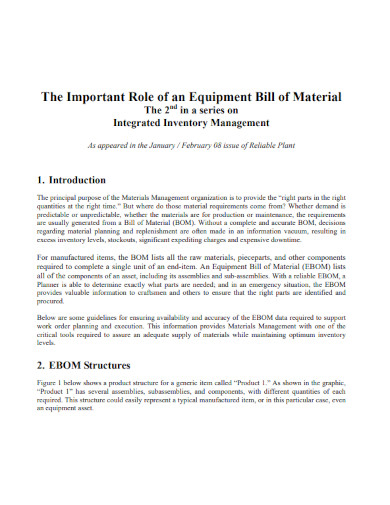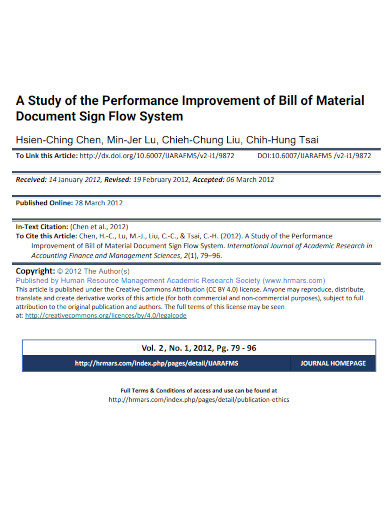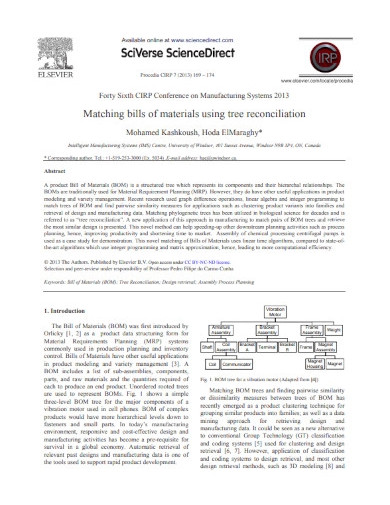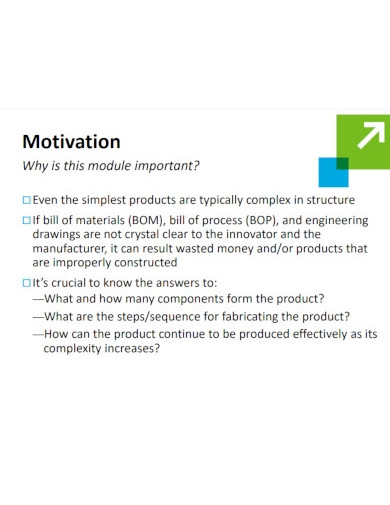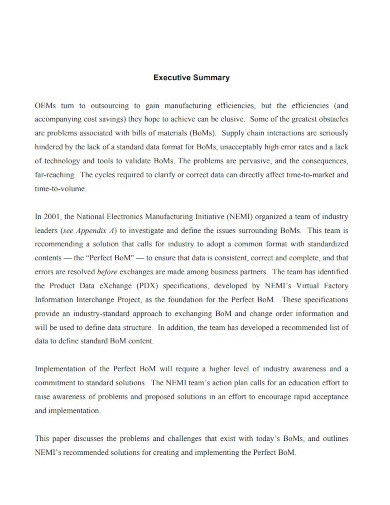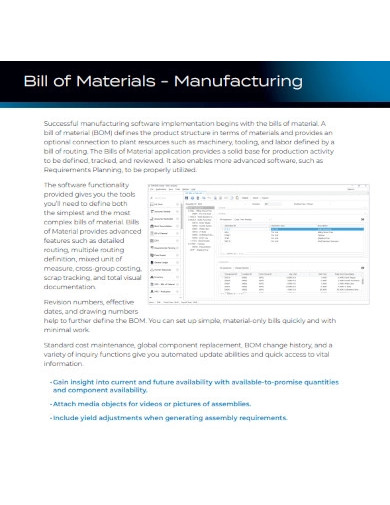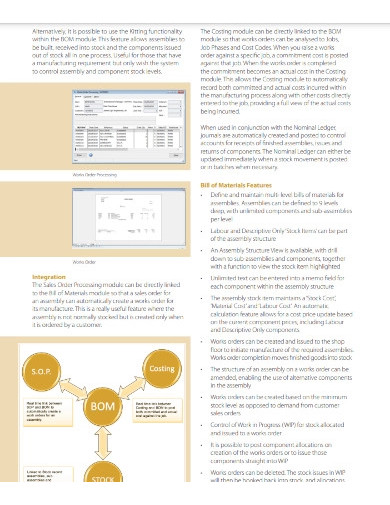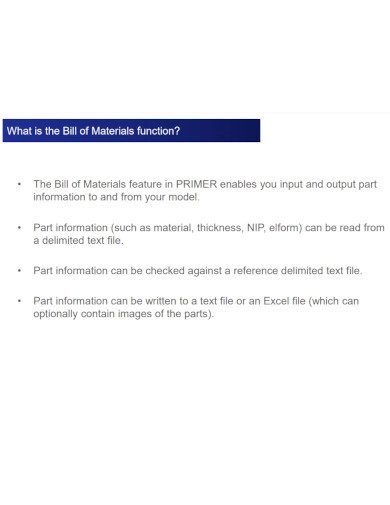Manufacturing companies are one of the most important industries in the market. They make up the supply chain facilitating the transfer transformation of raw materials into finished goods. After which, the finished goods are then transported and distributed to a retailer or directly to the customers. In some cases, a manufacturer and a supplier can just be one entity.
The process of manufacturing products undergoes several processes and the necessity to acquire specific materials needed to complete the product. Part of every manufacturing procedure is to create a bill of materials. The bill of materials and associated records describe the materials required to source and build an assembly. All manufacturers building products, get started by creating a bill of materials (BOM). To learn more about this, let us discuss this further below. And if you need to start working on this, we’ve got a list of a bill of material samples that are downloadable for free on this page.
11+ Bill of Material Samples
1. Bill of Material Production Planning
2. Sample Bill of Materials
3. Oracle Bill of Materials
4. Bill of Material without Prices
5. Equipment Bill of Material
6. Performance Improvement of Bill of Material
7. Matching Bills of Materials Tree Reconciliation
8. Bill of Materials and Bill of Process
9. Perfect Bill of Materials
10. Bill of Materials Software
11. SQL SE Bill of Materials
12. Bill of Materials
What Is a Bill of Material?
Since manufacturers need to assemble or create a product from scratch then it is essential that they have everything they need to build this product. A bill of materials (BOM) is a document that contains not only the materials needed to create a product but drawings, items, and instructions. The assembly process starts by creating a bill of materials. This is what creates product structure, or in simple terms, the recipe needed for its production. When preparing a BOM, collaboration from various departments is needed such as the design and engineering team, operations, manufacturing, purchasing, contract manufacturers, and more. This is important since everyone’s data would help create accurate results.
How To Create a Bill of Material?
There are several types of bill of materials used in several manufacturing industries. Some of which are as follows:
- Engineering BOM: is used by the engineering department where it shows the functional perspective of the product. This would contain the blueprint and technical and mechanical drawings.
- Manufacturing BOM: we have the complete list of materials and items required to make a manufactured, and ready-to-ship finished product.
- Sales BOM: here is the list of finished products and the components required to develop and this appears separately in the sales order document.
A bill of material is created by using a pyramid or hierarchy format, with the finished product at the top. So, to help you prepare a bill of materials here are several components to include in the document
-
Bill of Materials Level
Each level indicates a rank of each item, with this would help any department to understand current processes.
-
Number Assignment
Assign a number to each part or assembly in order to reference and identify parts quickly.
-
Names
Create a specific name for each item, raw material, equipment, and assembly as this will help you identify each part more easily. Make sure the names are unique so it is quickly identified.
-
Description
Provide a detailed description of each component or equipment so you are able to quickly understand each party easily.
-
Different Phases
When creating a product, this would undergo several phases. That being said, you may need to name each phase or cycle to indicate that a product is not fully ready for a launch or has been tested. This way, you will be able to properly track its progress.
-
Quantity
Determine how much quantity is needed to help calculate the expected costs and guide purchasing and manufacturing decisions and activities.
-
Procurement Type
Determining what type of procurement will help the department acquire each required component.
-
Reference Designators
This will determine how a certain asset fits the manufacturing process.
-
Units of Measurement
Each component should be assigned proper measurement units like inches or ounces as this will help create accuracy when making purchases.
-
Notes
Creating notes will help other team members identify if there is other important information left out.
FAQs
What files should be attached to a BOM record?
Work instructions, drawings, and blueprints should be attached to the BOM record to be used as a reference in case there are certain issues that need to be addressed.
What are the most common BOM levels?
These are the single-level BOM which is a simple and less complicated list for a product. And a multi-level BOM that offers greater details and specificity on the parts in the product.
What is a Bill of Quantities?
This is a document prepared by a cost consultant which is used in large construction projects. This defines the quality and quantity of work required to be carried out by the main contractor to complete a project.
A bill of materials is an important component that is needed in every manufacturing process. To make it easier for your to prepare one, don’t forget to download our free sample!
Related Posts
To Whom It May Concern Letter
10 FREE Notice To Quit Letter Samples & Templates
Security Company Profile
Written Warning
Event Program
OMR Sheet
Building Inspection Report
Employment Certificate
Teacher Lesson Plan
Deed of Assignment
Contract Termination Letter
Student Research Proposal
Diet Plan
Housekeeping Resume
Marriage Proposal Letter

